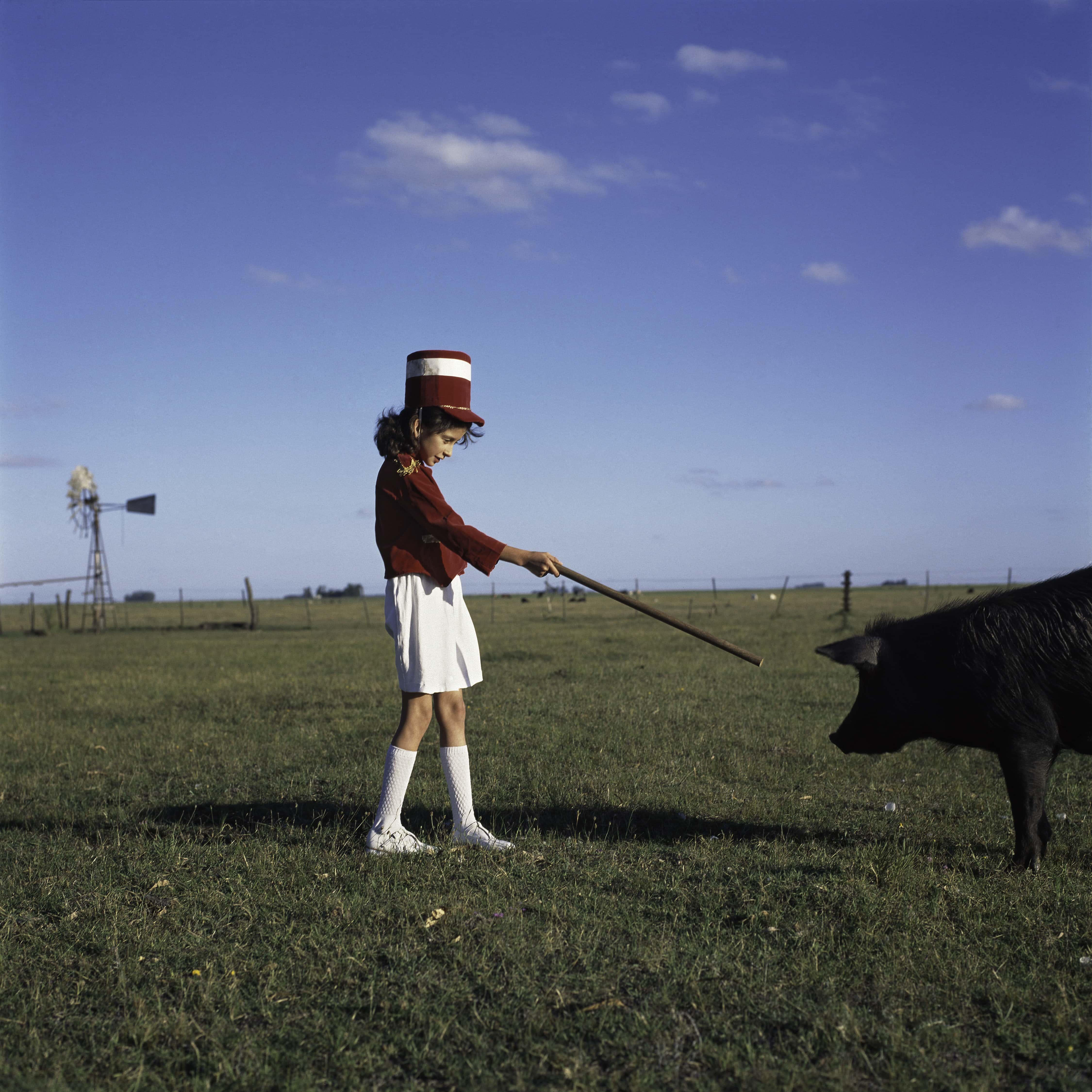A historical context
alignDRAW is an unusual artwork, even for the fields of media and digital arts. It was originally not created with artistic intention. Instead, its collection of images were generated in the course of ongoing scientific research in the AI field on the new uses of deep neural networks. For me, they certainly deserve to be considered “visual art” – and in this text I will try to consider possible pros and cons arguments and convince you at the end that I am right.
The history of visual art includes not only objects of devotion, history paintings by artists such as Titian, Jacques-Louis David and Delacroix, Christian narratives, portraits, landscapes and still-lives, but also many types of “technical” drawings and designs. They include maps, cartographic views of cities, and botanical and anatomical drawings. For example, we value as art many drawings by Leonardo da Vinci dealing with astronomy, botany, cartography, and palaeontology, as well as his designs of a flying machine and an armored military vehicle. The examples of architecture designs considered as fine art are drawings and paintings of many architects including Zaha Hadid, El Lissitzky, Le Corbusier and Mies van der Rohe.
The history of visual art includes not only objects of devotion, history paintings by artists such as Titian, Jacques-Louis David and Delacroix, Christian narratives, portraits, landscapes and still-lives, but also many types of “technical” drawings and designs.

A good example of how a scientist and inventor is later reevaluated and comes to be considered a great artist is Piero della Francesca. His contemporaries considered him to be a mathematician and expert in geometry. He wrote three treatises: Abacus treatises, On the Five Regular Solids, and On Perspective in painting. These writings deal with algebra and geometry as it existed at the time, and also Francesca’s innovative contributions to solid geometry and theory of perspective. The artist’s unique painting style is a result of his scientific studies of perspective and light.
Another such example is Leon Battista Alberti (1404 – 1472) now known as a famous architect and artist. But he was also a poet, linguist, cartographer and priest. In Lives of the Artists, the book written in the 16th century and now considered to be the first art historical text, Giorgio Vasari (1511-1574) praised Alberti’s scholarly achievements over his art. He wrote: “He spent his time finding out about the world and studying the proportions of antiquities; but above all, following his natural genius, he concentrated on writing rather than on applied work.”
However, both Leonardo and Francesca left some paintings, and Alberti left built architecture, and this justifies their current identity as “artists.” But what about genius inventors who did not themselves make drawings, prints, paintings or architecture? Can a technological artifact itself – rather than a drawing, a watercolor or an oil painting of such an artifact – be considered a work of art? Today we find first engines and locomotives, early photo cameras, and first computers in science and technology museums – and not in Tate, The Centre Pompidou or Guggenheim.
However, some technological artifacts did enter the history of visual arts. I am thinking about early 19th century inventors of photography. One such person was Joseph Nicéphore Niépce (1765 – 1833). His inventions include Pyréolophore, one of the first internal combustion engines, and the world’s first photographic process he named heliography (“sun drawing.”) His earliest photographic image fixed using this process dates from 1826-1827. A number of other early photography pioneers were also inventors rather than artists, and spent their life on many pursuits and not just photography. However, today the first photographs of these inventors are included in collections of top art museums and collections such as MoMA and The Metropolitan Museum in New York.

Note an interesting distinction. Such museums include their photographs – but not the earliest surviving devices that were used to make them. The latter are to be found in the history of science or perhaps even history of photography museums, but not in a fine art museum. But why not in an art museum?
Why are the test images recorded by inventors of such cameras that were not intended as art are now in art museums, but not their equipment? The same question can be asked about many other kinds of objects that today are part of art collections, even though originally they were intended as anti-art. Consider industrial designs, graphic design and utilitarian objects made between 1921 and approximately 1930 by first generation of designers in Moscow such as Lyubov Popova, Varvara Stepanova, Aleksander Rodhenko, El Lissitzky, Solomon Telingater and their Vhutemas students, and designs by faculty at Bauhaus and their students in Germany in the same period. These individuals promoted a new functional mass culture of rationality and economy – new aesthetics for clothes, furniture, book and poster design, typography, architecture, photography and cinema. They saw themselves not as artists but as engineers of this new culture for all citizens, and they explicitly opposed old “bourgeois” art made only for small numbers of people. In doing this, they invented the design profession. It is ironic that today their works are shown in major art museums and collected as art.
A number of other early photography pioneers were also inventors rather than artists, and spent their life on many pursuits and not just photography. However, today the first photographs of these inventors are included in collections of top art museums and collections such as MoMA and The Metropolitan Museum in New York.

Let’s now ask another question. Art museums don’t collect devices and machines. But what about different kinds of technology? Not already built single devices or machines, but rather systems developed by an individual or a team. Such systems are then used by others [to] make new things – for example, HTML is used to create billions of web pages. Can such systems be considered art?
In my 1999 article Avant-Garde as Software, I have already argued that new media technologies, systems, and protocols represent the new artistic avant-garde of our time:
From “New Vision,” “New Typography,” “New Architecture” of the 1920s, we move to new media of the 1990s; from “a man with a movie camera” to a user with a search engine, image analysis program, and visualization program; from cinema, the technology of seeing, to a computer, the technology of memory; from “defamiliarization” to information design. In short, the avant-garde becomes software.
This statement should be understood in two ways. On the one hand, software codifies and naturalizes the techniques of the old avant-garde. On the other hand, software’s new techniques of working with media represent the new avant-garde of the meta-media society.
The examples of such technologies named in the article included databases, search engines, multimedia, hypermedia, [the] internet, and the web. If we follow my argument, it is logical to consider innovative software of our time as very important works of art. So far, I only know one such example: the web protocol designed by Tim Berners-Lee in 1989 was auctioned in 2021 by Sotheby’s for 5.4 million dollars. In my opinion, other fundamentally important software technologies of our time should also be considered to be the key artworks of our age. They include the operating system, user interface, and included applications of the original Mac computer (1984), the page search algorithm developed at Stanford by future founders of Google (1996), or algorithms used to train large deep convolutional neural networks that kick-started the new deep networks stage period in AI history. These algorithms were described in a 2013 paper by Alex Krizhevsky, Ilya Sutskever (co-founder and Chief Scientists at OpenAI, which developed GPT models and ChatGPT conversational AI) and their professor Geoffrey E. Hinton at the University of Toronto. Ten years later, this foundational work was cited in 120,022 other papers.
Software codifies and naturalizes the techniques of the old avant-garde. On the other hand, software’s new techniques of working with media represent the new avant-garde of the meta-media society.

Elman Mansimov was a student in the same group, and in 2015 he developed another new idea. By this time, neural networks could already label images, i.e. convert them to descriptions of their content. And in 2015, Gregor and colleagues introduced a model called DRAW to generate coherent images using a series of numbers. Later in 2015, Mansimov combined the two ideas and showed that text descriptions can be converted by a deep network into images. He and his collaborators published a paper “Generating Images from Captions with Attention” which used as illustrations images produced by their new alignDRAW model. These 168 images were generated using prompts describing non-existent scenes such as “a herd of elephants flying in the blue skies.” At that time, Mansimov also saved another 2,541 images created by the same alignDRAW model.
Today, eight years later, we are in the midst of a real cultural revolution facilitated by generative artificial intelligence. Generative AI image creation services, applications, and models such as Midjourney, Adobe Firefly, Runway, and Stable Diffusion are discussed daily by both the professional image-making community and the press and are utilized in a wide range of industries, from architecture and fashion design to filmmaking and commercial photography.
Given this, it is difficult to overstate the historical significance of the first visual results produced by generative AI research in the 2010s. alignDRAW images can be compared to the first fixed photographs taken by Niépce in 1826-1827, the first “selfie” taken by Robert Cornelius in 1837, the first photograph of humans taken by Louis Daguerre in 1839, and the first color photograph taken by James Clerk Maxwell in 1855.
In my opinion, other fundamentally important software technologies of our time should also be considered to be the key artworks of our age. They include the operating system, user interface, and included applications of the original Mac computer (1984), the page search algorithm developed at Stanford by future founders of Google (1996), or algorithms used to train large deep convolutional neural networks that kick-started the new deep networks stage period in AI history.
The alignDRAW 2015 project marks the beginning of a new paradigm in image creation. Photography was already two hundred years old at the time, while computer graphics were fifty-five years old. The first 3D wireframe computer graphics appeared in 1960. Ivan Sutherland, an MIT student, created Sketchpad, the first interactive CAD system, in 1961-1962. Sketchpad gives visual commands to the computer via the interactive screen, and the computer responds by drawing lines.
However, generative media has brought yet another surprising method of creating visuals with computers. You can now describe a desired image using natural language rather than creating it by hand, using mechanical or software devices, or capturing it with a lens. You are able to generate an infinite number of visual universes simply by naming them, which is extremely amazing. While we can debate whether AI is “creative” or not, in my perspective, it is already technically more proficient than most art students and adult artists.
When we look at the initial low-resolution and hazy images from nearly two centuries ago, we see the whole future potential of photography, which eventually became the dominating imaging and communication technology of our time. And when I look at comparable low-resolution alignDRAW pictures, I see a similar promise for a new major visual method that could very soon become as essential as lens photography was in the last two hundred years. This is why these images are valuable, magical, and worth collecting.




